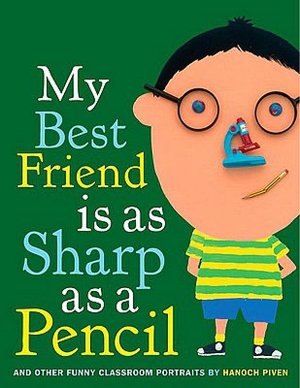My last chapter I chose for my “Fab 4” was chapter 9,
poetry. The reason I chose to do this
chapter is because I always dreaded reading poetry when it was assigned to
me. I felt that if I read this chapter,
it would help me get a better understand as to why poetry is an important
component in literature. Poetry for children conveys the
experiences and perceptions of the child in a way that is meaningful and not
condescending. When assigning poetry in
a classroom, it engages the children in a new and heightened understanding of
the world, themselves, and others. In
addition, it provides opportunities for children of all linguistic and cultural
backgrounds to develop important oral skills through reading and performing
poetry. In this chapter, it talked about
drawing pictures of the poetry of what the students read, thinking aloud, using
a spiderobics chart located on page 24, and performing poetry. In my classroom, I
would have my students explore and choose poems. I would then have them read
and discuss some of the poems as a class. I would have them choose one poem to
recite and act out. I would have them
get with a group and have one student perform their poem and have a group discussion
about how the students interpreted and presented the poem.
Some examples of
poetry:
Hickory, Dickory,
Dock by Keith Baker (Grades 1-2)
A
twist on an old favorite features some serious antics on the part of
a busy little mouse. As a huge grandfather clock strikes each hour from
one o' clock in the afternoon to midnight, a different animal passes by, and
the mouse has a funny interaction with each of them. The story includes counting, telling time,
and a cozy bedtime ending to engage them the reader.
My Teacher’s in
Detention by Bruce Lansky (Grades 3-4)
This book covers
wild and wacky school topics, like bringing skunks to show-and-tell, falling
asleep at your desk, and ripping your pants on the playground. The big-timers
of children’s poetry have converged on the pages of this book to deliver the
very best in school poetry.
My Best Friend is as Sharp as a Pencil (Grades
5-6)
A playful
collection of classroom portraits made from creative groupings of objects
includes a picture of the narrator's intelligent best friend comprised of a
globe, pencil and magnifying glass.
















